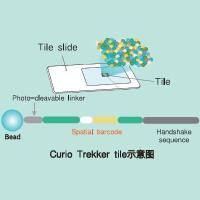Recent molecular genetic studies in cardiac and skeletal muscle have revealed mutations in a battery of sarcomeric muscle-restricted genes that appear to be associated with various myopathies (1 ,2 ). In sharp contrast, no mutations in smooth muscle cell (SMC)-restricted genes have been linked to a SMC disease phenotype, although a review of the literature indicates that many SMC diseases with a presumed genetic basis are present in human populations (3 –13 ). An important first step in linking a disease phenotype to a mutation within a specific gene is the accurate physical mapping of the candidate gene to a specific chromosomal region within the context of other genetic markers, such as highly polymorphic microsatellite markers now routinely used for recombination-based linkage analysis of families segregating a particular disease phenotype. Several methods exist for the physical mapping of genes, including fluorescent in situ hybridization (FISH) (14 ) and interspecific mouse back-crossing (15 ). FISH analysis is relatively fast, but often requires large genomic clones and does not afford the high-resolution mapping required to link a gene locus to a disease phenotype. Interspecific mouse back-crossing can be quite powerful with respect to resolution, but studies are necessarily limited to the mouse genome. Thus, a broadly applicable, fast and simple method of gene mapping would be desirable to aid investigators in localizing potential candidate disease genes, especially those pertaining to SMC-associated diseases.






